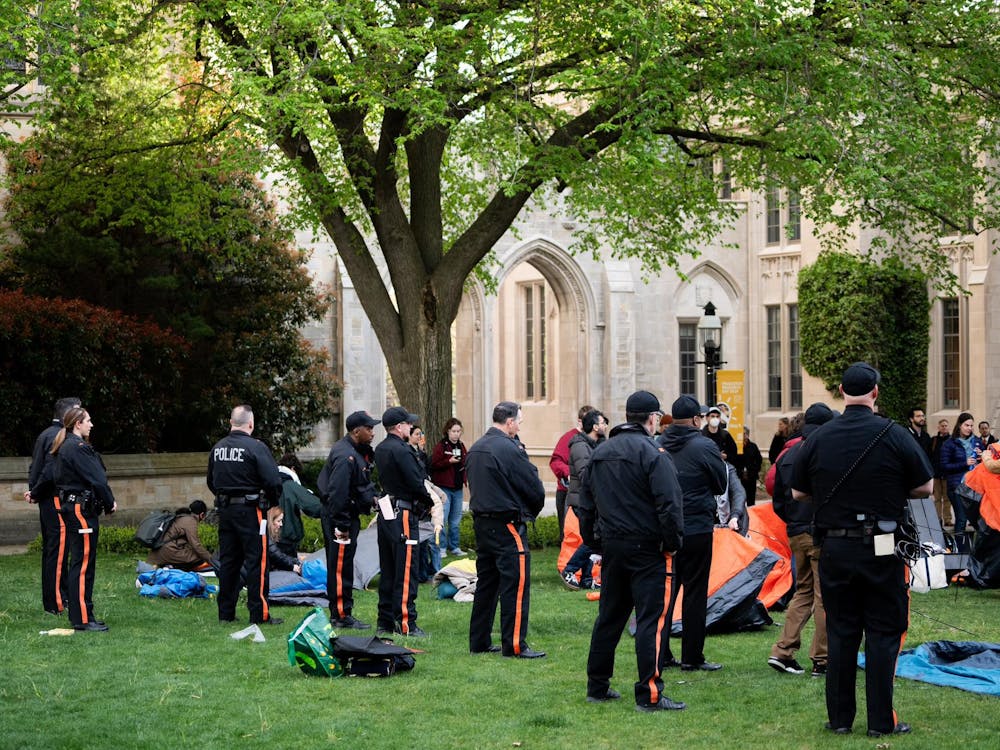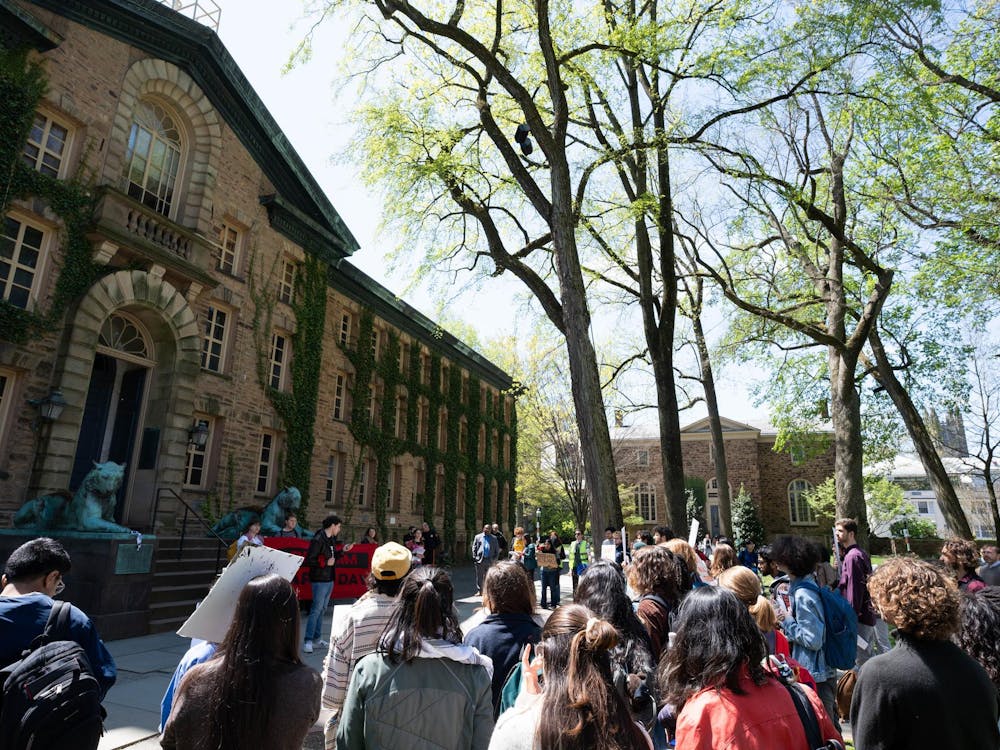By Laura Conour and Stuart Leland
Two articles published recently in The Daily Princetonian contained factual inaccuracies and misleading information about research conducted with animals at the University. As the directors of two offices — Laboratory Animal Resources (LAR) and Research Integrity and Assurance (RIA) — that support the University’s research and educational programs, including laboratory animal research, we are writing to correct these errors.
In an April 13 news article “U. accused of violating Animal Welfare Act in marmoset monkey incident,” contributing reporter Cassidy Tucker presented inaccuracies about two marmoset monkeys that escaped from their primary enclosures. In the incident, which occurred in December of 2014, two animals sustained injuries as a result of a fight between one of the escaped marmosets and another inside its primary enclosure. A veterinarian promptly treated the injured animals. The news article erroneously reported that an “outside firm retained by the University” investigated the incident. In fact, the University’s Office of Laboratory Animal Resources conducted the investigation.
As a result, we changed several of our procedures, including modifying the current caging to more easily determine the security status of the doors, developing new procedures to facilitate transfer of marmosets to and from their home caging, training animal care staff and research personnel on these updates and identifying new caging for purchase. The Institutional Animal Care and Use Committee (IACUC), a committee comprised of University scientists and non-scientists as well as members of the public, was informed throughout. As required by policy, the University reported the incident to the Office of Laboratory Animal Welfare (OLAW), a regulatory compliance office under the National Institutes of Health (NIH). This is standard procedure for such incidents. By following applicable regulations and reporting significant incidents, the University works diligently and transparently with federal agencies to ensure animal welfare.
The article also reported that Michael Budkie of Stop Animal Exploitation Now (SAEN), an animal activist organization, had filed a complaint with the United States Department of Agriculture (USDA). According to Tucker, the complaint sought penalties of $10,000 per infraction per animal. To investigate this we obtained a copy of the SAEN allegation to review the concern, which is available here: http://www.princeton.edu/ria/animal-research-protectio/documents/SAENLetter20150406.
The complaint, which improperly refers to Princeton as Purdue and chooses to ignore the prompt corrective actions undertaken by the University as described above and in the OLAW documents obtained via the Freedom of Information Act (FOIA) by Budkie, does not seek fines against the University. The ‘Prince’ chose to publish the article before we had an opportunity to verify the facts with the USDA. Commenting on an unverified allegation would have been irresponsible, thus we chose not to provide a statement to the reporter at that time.
Shortly thereafter, on April 20, Courtney Buoncore and Gwyndolyn Goldfeder, in a ‘Prince’ opinion article entitled “Opaque transparency: What we (don’t) know about Princeton’s animal experimentation,” published additional misleading statements regarding research with macaques. This piece implied that the research conducted using animals on campus was somehow hidden from the student body and lacked transparency.
To illustrate the claim, the opinion piece focused on a study conducted by the laboratory of psychology professor Asif Ghazanfar. This research is in fact described both on Ghazanfar’s website and in full detail in peer-reviewed scientific journals. The relevant article, describing Ghazanfar’s research on speech production and face/voice integration, was published in the Public Library of Science (PLoS) where it is freely available to the public: http://www.ncbi.nlm.nih.gov/pmc/articles/PMC3182859/.
Buoncore’s and Goldfeder’s descriptions are inaccurate as reflected in the entirety of the PLoS paper. They stated that the heads of macaques were “cut open” and head posts were “stuck in.” As stated in Ghazanfar’s research article, these macaques had sterile surgery where a single head post was surgically implanted, following IACUC-approved protocols and procedures. Additionally, great time, care and attention were used to train these macaques using positive reinforcement to sit in restraint chairs and perform tasks. The arms of the macaques were not restrained by Velcroand, in fact, these animals used their hands to depress levers in response to monkey avatar images of facial expressions and vocalizations and were rewarded with juice treats in a positive reinforcement paradigm. Buoncore and Goldfeder described the macaques staring “for hours at a screen” when in fact, the paper describes behavioral sessions “spanning durations of 25 to 50 minutes.”
We encourage anyone interested in the topic to read the publication in its entirety for a complete and transparent description of the research and the scientific discoveries that resulted from the work. The University’s other research programs are no exception. They are typically described on a laboratory’s website so that students, faculty and others in the community can learn about the research. The knowledge that results from that research is published after rigorous anonymous peer review and is openly available to the scientific community and the public.
At the University, laboratory-based research and teaching takes place with crayfish, frogs, golden shiners (fish), larval salamanders, macaques, marmosets, mice, rats and sea slugs. Of these species, 60 percent of the animals used in research at the University are fish and 38 percent are mice and rats. Additionally, our students and faculty conduct field research around the globe with a focus on conservation of species and the impact of the environment on these species’ survival. Students are active participants in these scientific endeavors through junior papers, senior theses and doctoral theses. All such projects involve animals only when there is no alternative way to gain the knowledge and understanding of the system or question under investigation.
As directors, our priorities are the welfare of the animals and the integrity of the animal research program in which the University upholds and often exceeds the requirements set forth in regulations, policies and guidelines. Robust, quality research depends on animals that are healthy and free of undue stress. We serve in our roles at Princeton because the University invested resources in the animal research program, hiring professionals with expertise in the field of laboratory animal medicine to support the exceptional science that takes place here. We believe that openness in science is in the public interest and is essential to the process of scientific inquiry. This is especially true with highly regulated research, such as that involving animals, and this is why we feel it is important to provide accurate information in light of the inaccuracies included in the two recent ‘Prince’ articles.

Laura Conour (DVM, DACLAM) is an attending veterinarian at the University, and director of Laboratory Animal Resources. She can be contacted at lconour@princeton.edu. Stuart Leland (DVM, DACLAM) is the director of Research Integrity and Assurance. He can be contacted at sleland@princeton.edu.








